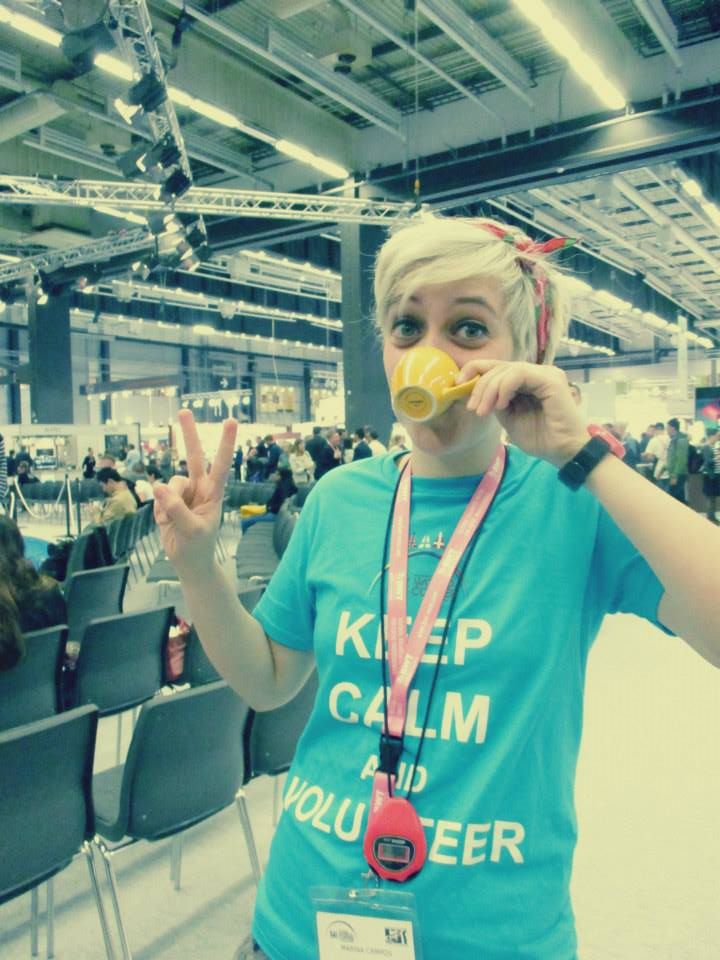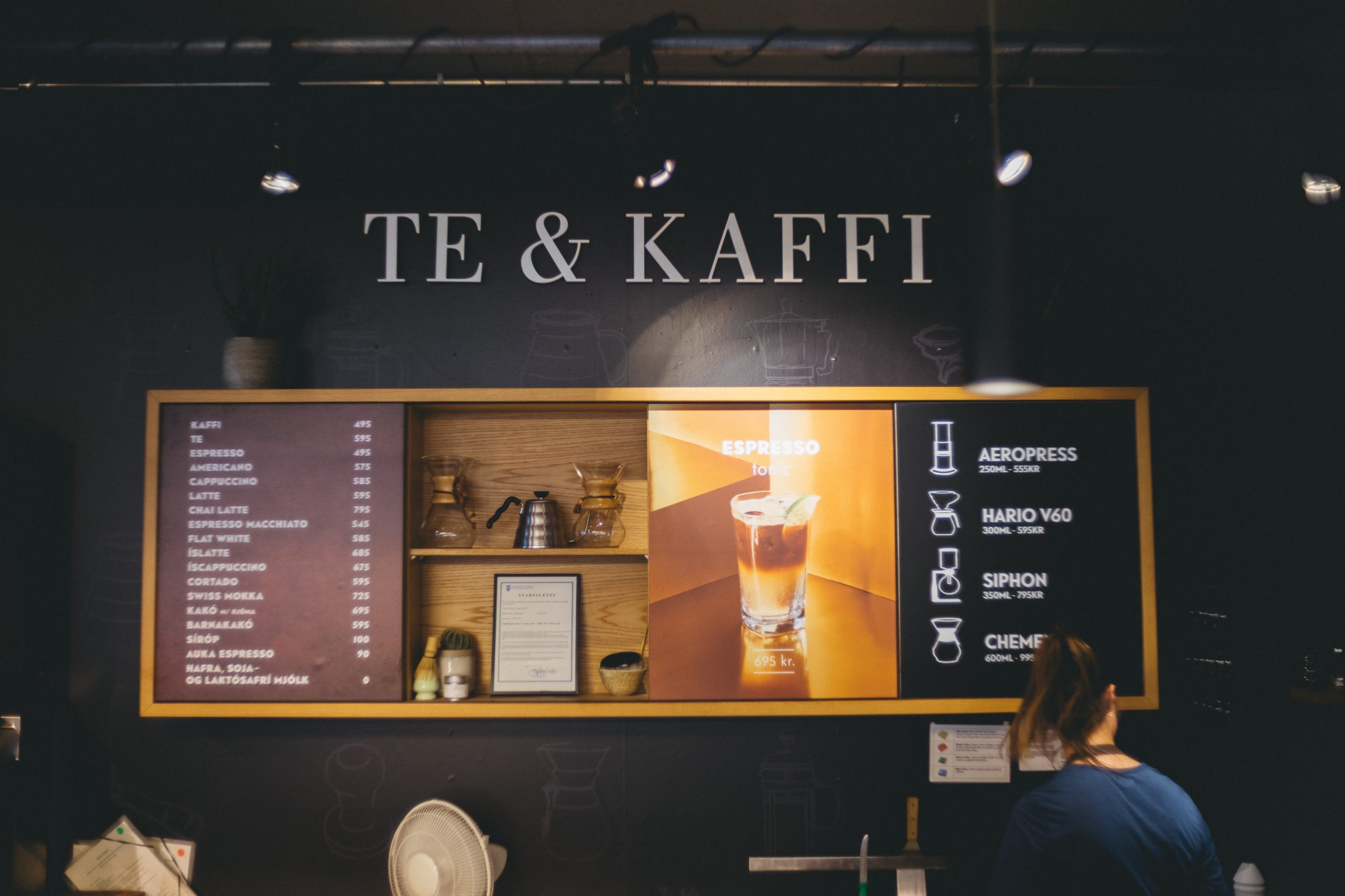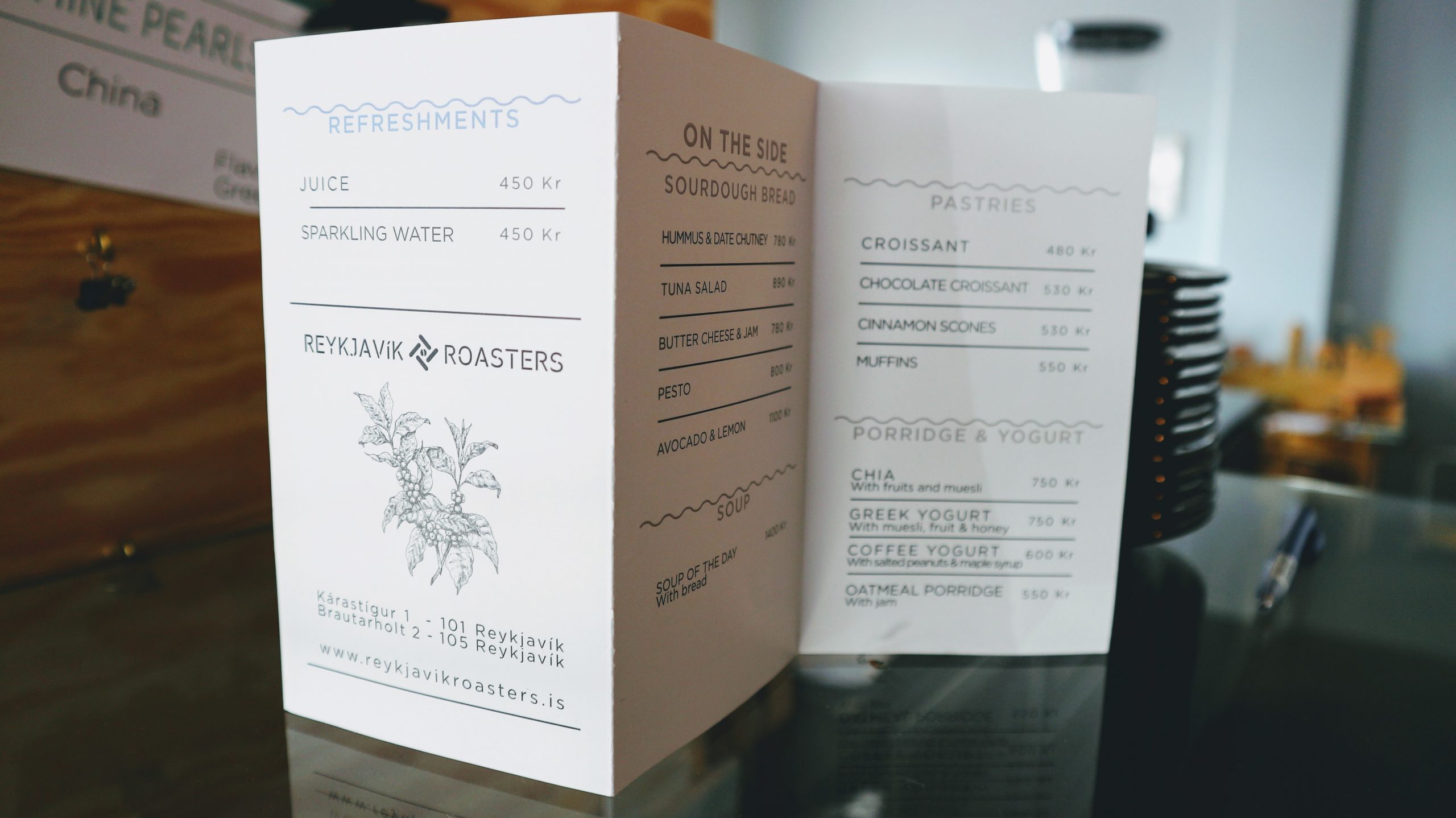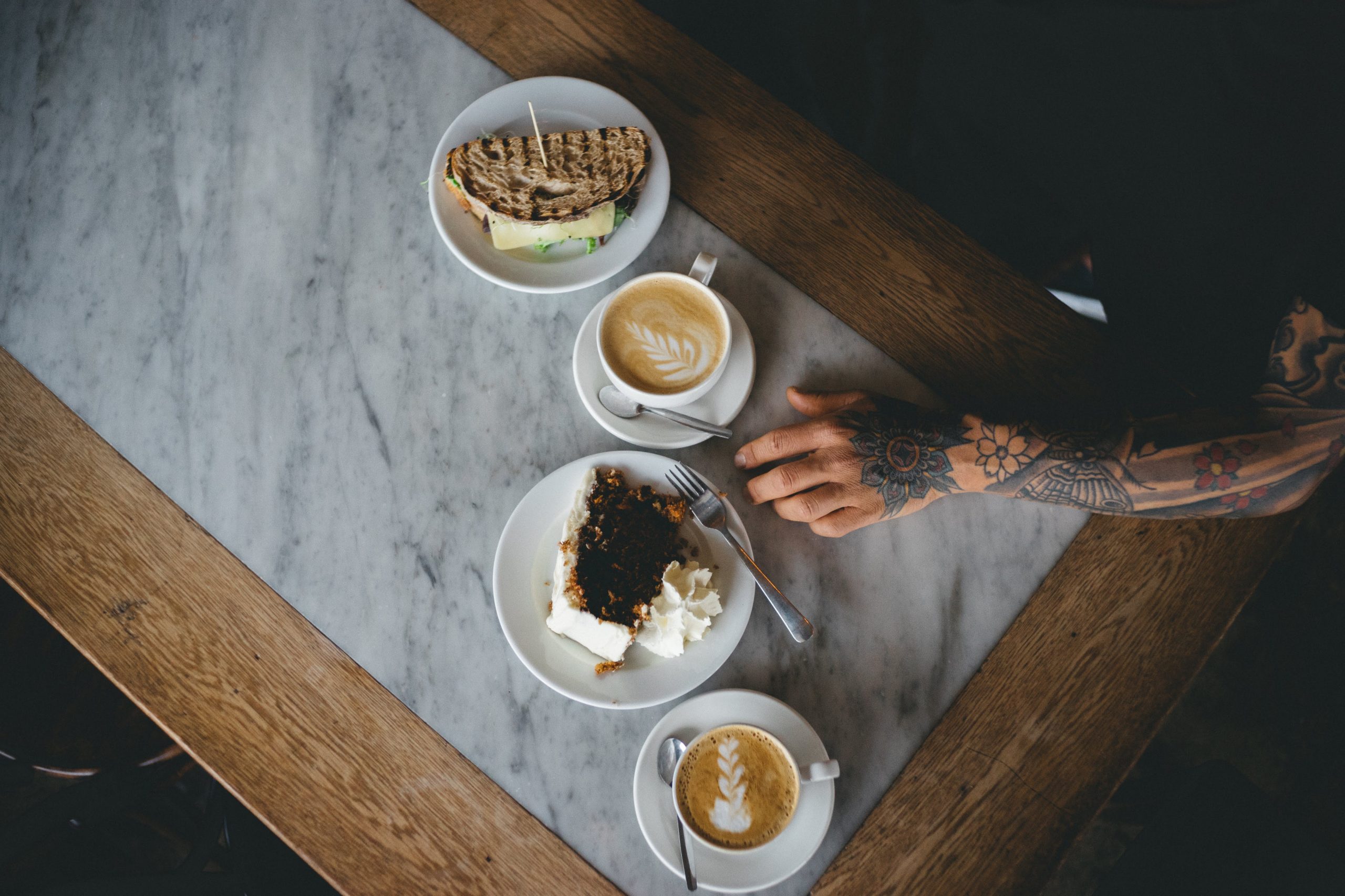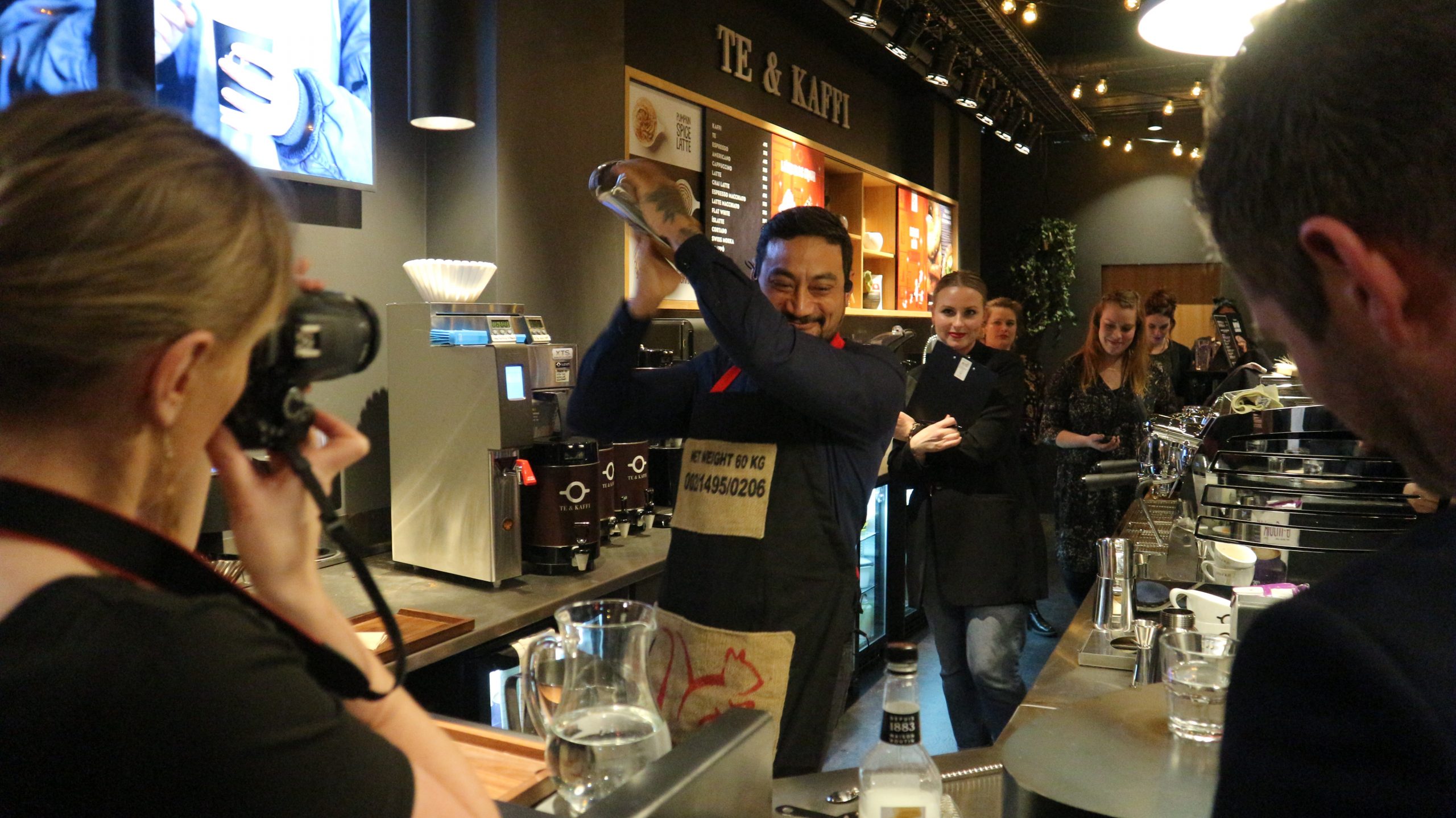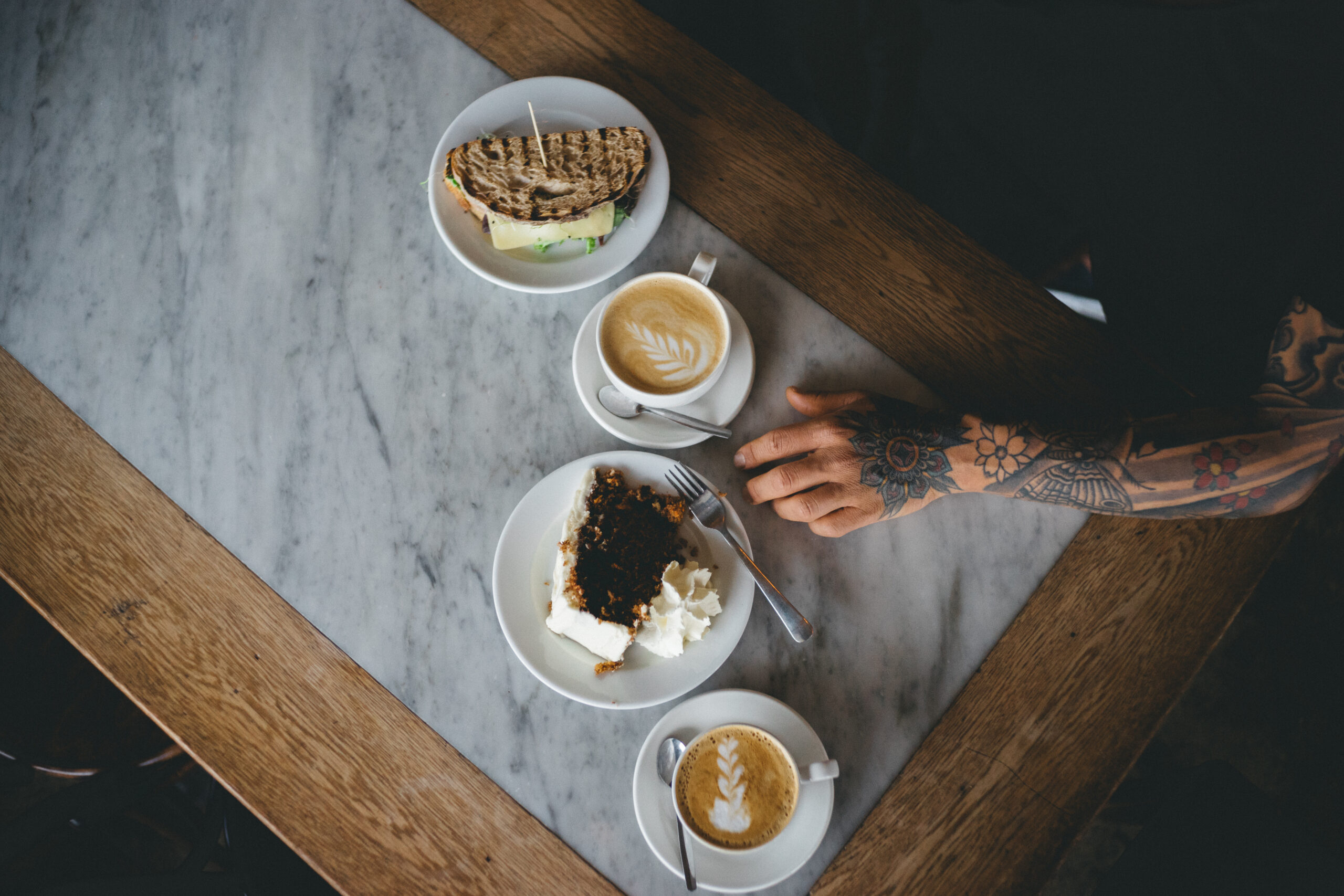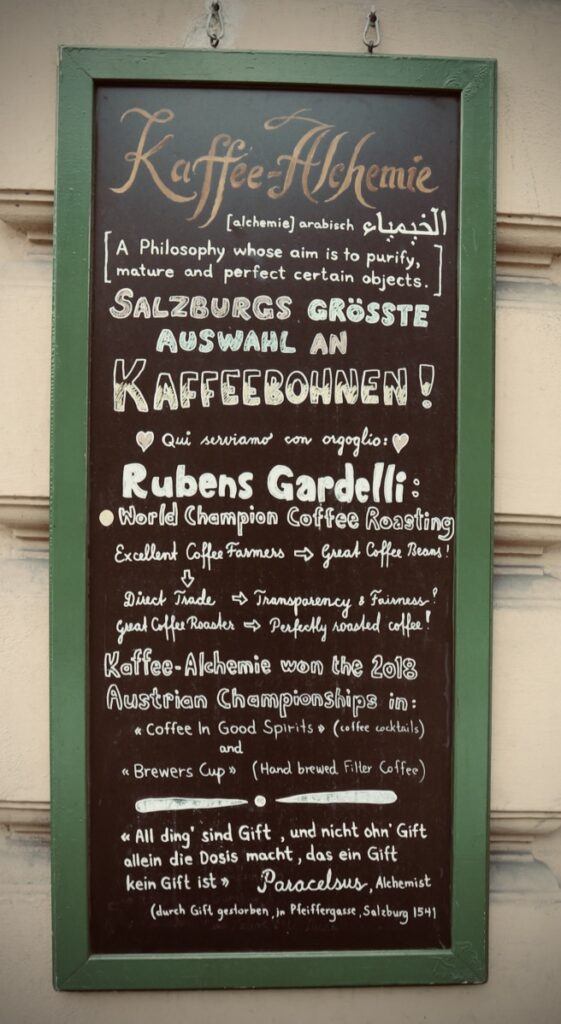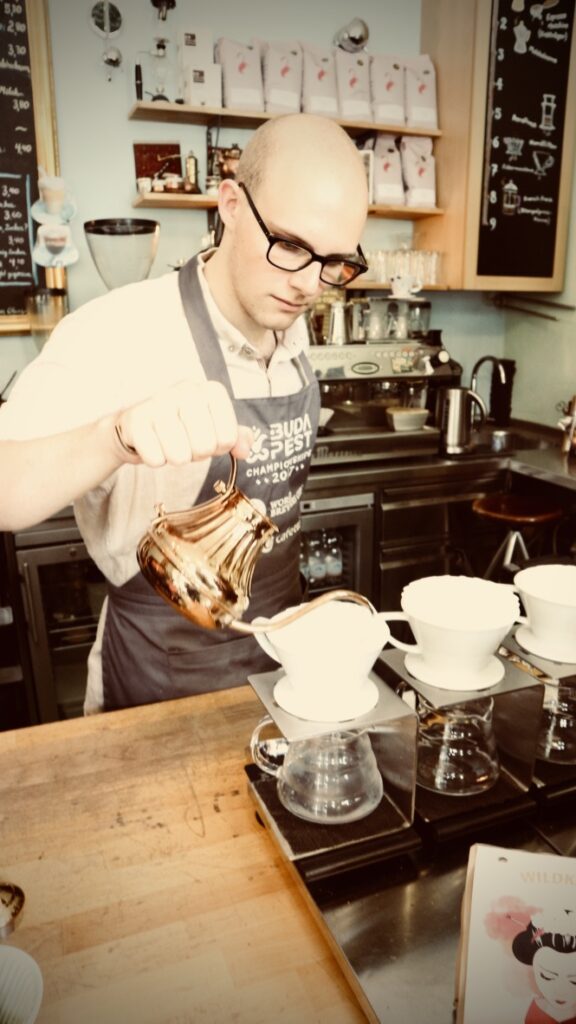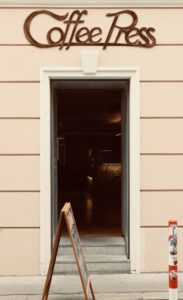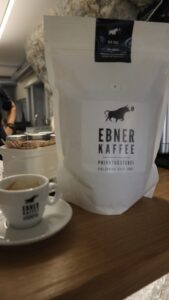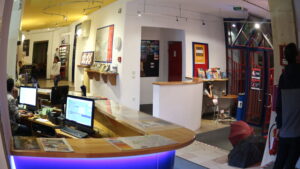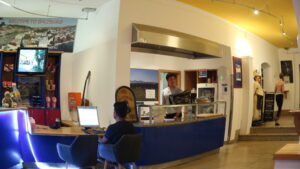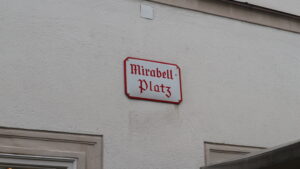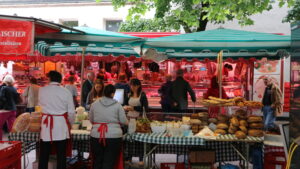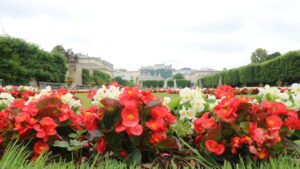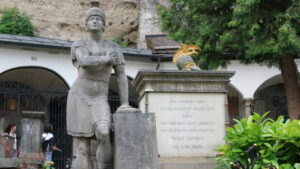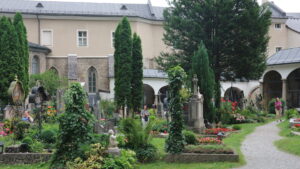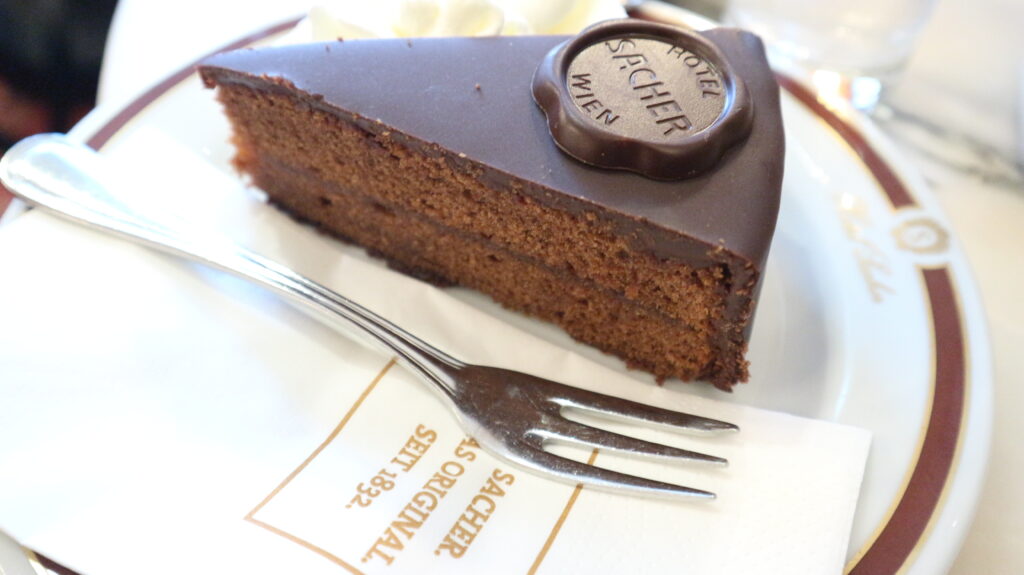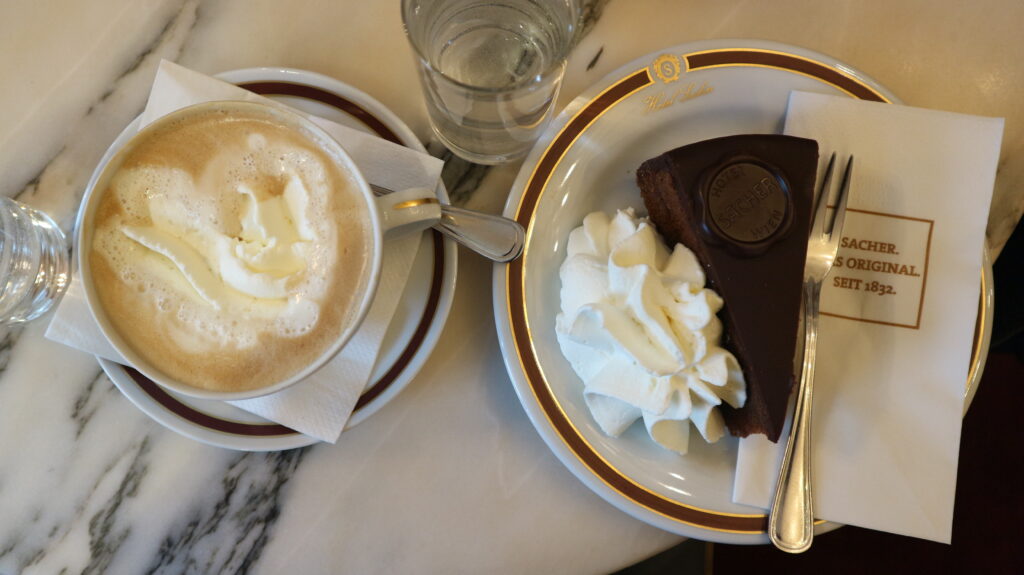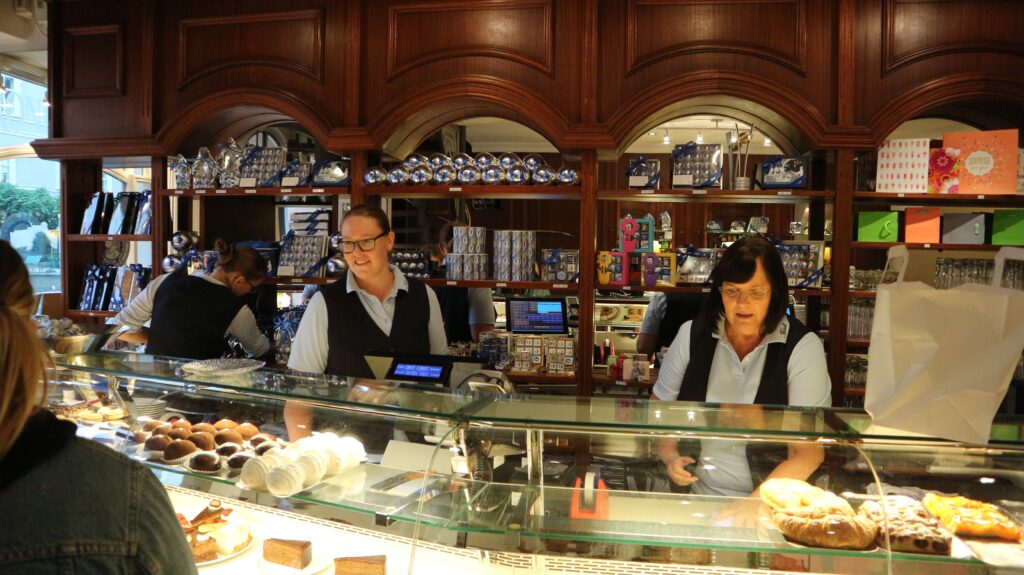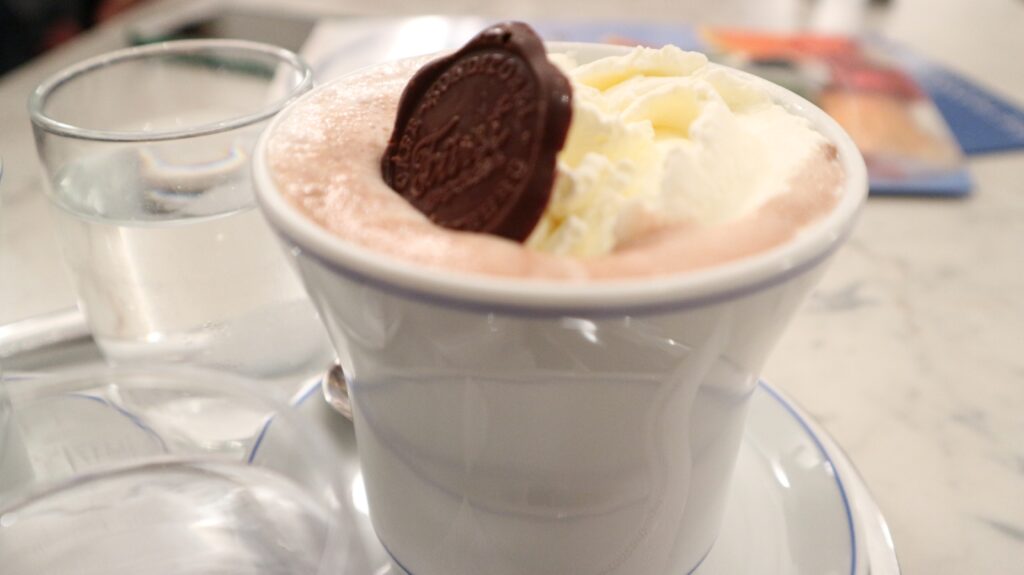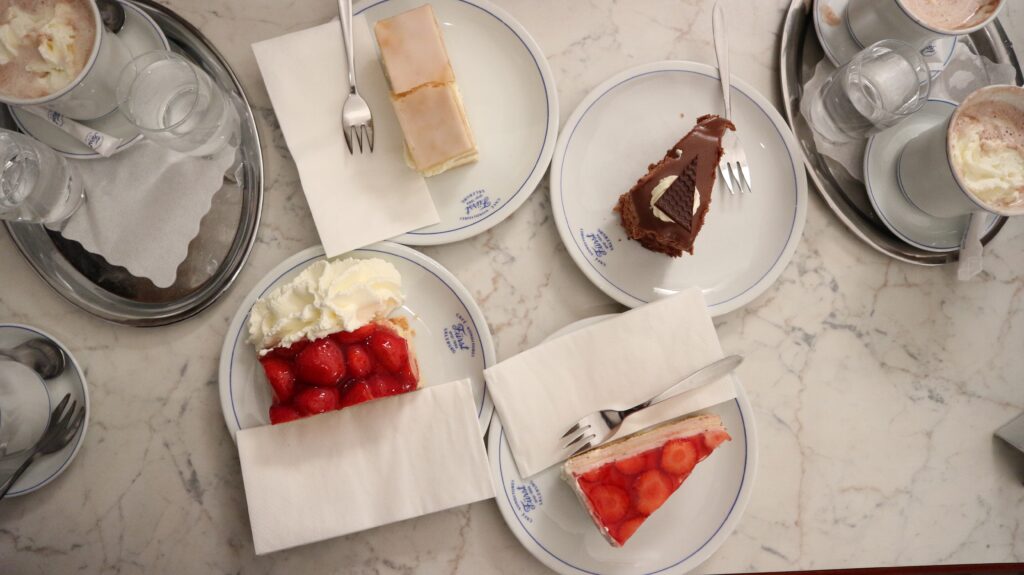Marina Polanski
I met Marina in 2016 at the bi-annual hospitality fair Hostelco in Barcelona, since then we are friends and we share the same passion for coffee. That's the reason I choose her to start this new section of shorts interviews called Q&A.
the coffee we serve is thanks to the effort and dedication of many people
Marina Campos.
Who is Marina Polanski (Campos)?
I am Valencian by birth but a citizen of the world. From a very young age, I began to travel and live in other countries, trying to understand what motivated me the most in life. The people of my generation do something good and bad at the same time, it depends on how you look at it: having to adapt to the times that change continuously, travel gives you opportunities for it. I worked in restaurants, hostels, as a translator and I even did an Au Pair. What I discovered throughout these years is that I like people very much, eating, hospitality, having to continually reinvent myself, create positive impact in the lives of
What is your career in the coffee sector?
My passion for specialty coffee was born in Buenos Aires and by accident. Like many people in the industry, I was lucky to fall in good hands and had a boss who taught me a lot about coffee and hospitality. At LAB Coffee Roasters, for his „fault“, I wanted to continue studying the subject and followed one of them to Brazil on a trip that took me through coffee fields, roasting and exhaustive training. Finally, I decided to return my home country to realize everything I had learned and started working as a head barista at Black Remedy, which allowed me to travel with them to different countries for the World Coffee events, expanding my horizon and meeting people who had the same hunger to learn and share that as I. Today, I am the Marketing and Communication Coordinator of SCA Spain, and I work for Dalla Corte Ibérica, as a coffee ambassador, where I try to spread the specialty coffee culture and its many aspects. They push me to grow continuously and develop as a professional traveller, researcher and innovator. I still cannot believe that I dedicate myself to doing what I like the most in the world, from which I also can live from.
Who is the person you most admire in the industry?
To my mentor: YODA or worldwide more known as Danilo Lodi, coach and sensory judge, who has a memory that one usually would have saved on a USB. He has had a
The presence of the woman in the coffee industry is higher than that of the men, but nevertheless, in the events the majority are men as well as in championships. Why do you think, it is like that?
Confidence, fear, pressure … those concern us all at the time, regardless of gender.
The WBC allows women and men to compete equally internationally, but the presence of women is still much lower than that of men, although it is changing. I hope that the women who already compete or have won (Emi Fukahori, Agnieszka Rojewska, Charlotte Malaval and many more) will inspire the new competitors and equate both genders. I would like to see a woman from a producer country to have the WBC trophy in her hand. There is already a very good candidate for it this year
From your point of view, what is the skill a person should have to work in the coffee world?
In my point of view one must have sensitivity (to read the client); be a good communicator and be humble (to convey information in a proper and fair way, the coffee we serve is thanks to the effort and dedication of many people); have an open mind and at least be able to communicate in a language other than the native one.

I like that the person who roast can take out the sweetness
If I go to your house, how will you prepare my coffee?
In my house I do not prepare the coffee ☺ Andrea, my boyfriend, who is neither a barista nor does anything related to coffee, but has learned to use Bialetti as a professional, has introduced the French Press to his office and is helping me spread the coffee culture. Possibly if I do, I would invite you to have an espresso like a gentleman in my office, because it is an obligation that we always have good coffee, or we would go to one of the „high level” coffee shops that we have close to home.
Winter, spring, summer or autumn?
It’s a tricky question. Spring and autumn, I hate the heat and in winter people turn gloomy and are too lazy to leave the house.
Acidity, sweetness or bitterness?
Balance or metamorphosis, I love when they change the flavours with a minimum temperature difference. I could not decide on a specific flavour, it depends on the moment, the company and the state of mind. It is complicated, I love fruits so when I find notes of strawberry, melon, pineapple, mango, berries, lime, naranjilla, passion fruit, papaya … I moan in happiness. Once I tried a coffee that clearly tasted of lavender and raspberry, I even thought about framing the bag and write to the producer to congratulate her.
Once I tried a coffee that clearly tasted of lavender and raspberry, I even thought about framing the bag and write to the producer to congratulate her

Light roast, medium roast or dark roast?
I like that the person who roast can take out the sweetness.
Is Polanski real or artistic?
Artistic of course, the fault lies with my Polish friends in London. I spent a season there, like most of the young Europeans of my generation and how it happened to more than one, I did not have English friends, most were Polish, and they renamed me with a known surname.
What is the technology that differentiates Dalla Corte from other manufacturers?
Dalla Corte was the first Lead free brand on the market with a unique multi-boiler system, it´s own and patented. Besides being a relatively young company, the family history of espresso machines goes back to 3 generations of system developers, and the person who invents all this high technology is the owner, Paolo Dalla Corte. I must say that they are a super creative and super close family that makes all those who are part of the brand participate in the growth of the company.
What model do you recommend using for the first steps in the world of specialty coffee?
The EVO2 model, given that out of all our machines, it is the one that manages less quantity of variables giving a unique stability and quality to each one of the extractions.
Spreading the coffee culture in our country is not an easy task. Where do you think the industry should put more emphasis?
There are so many open fronts to which we should send energy … The final consumer, because if there is no demand there is no industry. The producers, because if there is no product there is no industry. In education, because if there are no professionals we do not advance. It is a complicated question, although I recommend focusing first on one objective, the one that you think needs the highest priority.
Any future project that you want to share?
Besides being a barista, I studied Social Work and I would like to be able to help the producers, collaborate in an international cooperation project related to coffee, but to achieve this, I still have to learn many things first. I do not know, now I am very well, I do what I like and that is more than many people can say. I feel lucky.
A Day in Berlin
enero 13, 2019barista world,Kaffekirsche,specialty coffee,baristamilka,NORA ŠMAHELOVÁ,Berlin,travelingbarista,The barn,chapter one coffee berlin,travellingbarista,Five Elefants,Travel,Kaschk,coffeelovers,Röststätte Berlin,Berlin coffee scene,theexploringbarista,Father CharpenterCoffee,Berlin
Berlin, 3.5 million inhabitants, 13 neighborhoods and more than 55 specialty coffee shops. What more do you need to continue reading?
Lee este articulo en español aquí http://www.essenceofcoffee.net/las-mejores-cafeterias-especialidad-berlin
Berlin, where the movement of the Third Wave of coffee has been spread from neighbourhood to neighbourhood, spreading into a network with more than 55 specialty coffee shops throughout the city.
Mariëlla Giljam's publications about Berlin on her blog “The Exploring Barista”, meeting Andreas Piel, who worked at “Kaffeekirsche Roastery”, in Reykjavik and Nora Šmahelová, co-owner of “Chapter One Coffee Berlin”, aroused my curiosity to visit Berlin, where the movement of the Third wave of coffee has been spread from neighborhood to neighborhood, spreading into a network with more than 55 specialty coffee shops throughout the city. Where you can enjoy the best grains on the market, prepared by passionate baristas, who came to this wonderful city from all corners of the world, and serve in spaces designed to raise your experience to another level by having a cup of coffee in your hands.
For those born after the cold war, Berlin is just a city in Germany. But for me and for many of my generation, Berlin is much more than a city. It is an Icon. We suffered with each Berliner, who jumped behind the wall, we dreamed of its demolition and we cried in hope, when finally Germany reunited and the "Iron Curtain" fell.
The plane landed at Tegel airport on December 6 at 10:30 PM. It was already night and therefore it was difficult for me to orientate myself. Since I only had one day in Berlin, the challenge was even greater, because in just a few hours, I had to learn to move around in a big and unknown city.

Brandenburg Gate 
U-Bahn station at Alexanderplatz 
Berlin Tegel Airport
As the bus enters the city, I noticed that we passed through places that are very familiar to me: Tiergarten, the Brandenburg Gate, Friedrichstraße or Alexanderplatz and the feeling of being lost vanished.
Fortunately for me, traveling in Berlin with public transport is very easy and cheap, thanks to the 24h Berlin Welcome Card, which cost only 19.90 euros. You can travel by bus and metro in the areas A and B.
KASCHK. Linienstrasse 40,
Their focus is directed to quality coffee, local and Nordic craft beers and a couple of Shuffleboard tracks, a game similar to petanque but with discs and on a wooden table.
As I was on my way to “The Barn Roastery”, I spontaneously decided to get myself a cup of coffee at “KASCHK”.
Something that striked me was the combination of coffee, beer and long tables, where everyone shared a table, which reminded me of the Oktoberfest.

While I went, sip by sip, giving a good review of my double espresso (a blend 66% El Salvador and 33% Kenya, both washed and toasted by “Fjord Coffee Roasters”), the customers went looking for their dose of caffeine. All to take away, but nobody bought their own cup, which leads me to reflect on the amount of waste generated by it and ways to stay loyal to my manners and reduce as much disposable packaging as possible.
Unfortunately it is something that is becoming more common and it is not surprising that the European Union contemplates in its plan to charge a tax for disposable packaging.
THE BARN ROASTERY. Schönhauser Allee 8
“The Barn” has 6 establishments in Berlin. Everyone has coffee as an element, but each of them is focused on different segments
of the gastronomic industry: barista school, natural wines and cocktails with coffee, cakes and seasonal menu, sandwiches and artisan cakes, coffee tasting menu or different preparation ways to filter coffee, to get their pure taste.
The Barn Roastery opened in 2012 and I think it is a must for every coffee lover. From here all the coffee they offer is sold and sent to the whole world.
The space, carefully designed and with a marked industrial accent, is a bit noisy since there is no acoustic isolation between the design, roasting and packaging areas of the cafeteria.
But it was music for my ears! I enjoyed it while drinking their delicious "signature drink", the Flat White Christmas, which has subtle aromas of cinnamon, apple and clove.
Out of all its establishments, “The Barn Roastery” has the most pure coffee taste, with a wide range of specialty coffees to enjoy in different filter formats and a menu of drinks based on espresso, which are well known throughout the world, including us. Highlighting the baristas for their professionalism, kindness and good treatment to the client.
RÖSTSTÄTTE BERLIN. Rosenthaler Straße 40-41
“Röststätte” began its journey in 2003 as distributors of espresso machines and mills.
Today, they have two coffee shops: “Röststätte” at Ackerstraße 173 and “Röststätte Berlin”, which is located inside an inner courtyard between buildings in the direction of the Rosenthaler Straße 40 and 41, in addition to the coffee roaster.
Although my intention was to visit the establishment in Ackerstraße 173, but the gps and the torrential rain that fell on Berlin at that time, guided my steps towards the new establishment in Rosenthaler Straße 40-41. The cafeteria is elegant, cozy and with a table service. The coffee that I drank was a double latte perfectly executed. I did not entertain myself there as it was not the establishment I wanted to visit and I still had to go to the more important places on my trip, for which I had to move to the opposite side of the city.
CHAPTER ONE COFFEE BERLIN. Mittenwalder Straße 30
The Kreuzberg a neighborhood with little gem with a coffee aroma, Chapter One Coffee Berlin.
The Kreuzberg is famous for being the neighborhood for students, artists and the great Turkish community, where are multiple restaurants, second-hand shops, street art, the famous Marheinekehalle (a market of the 19th century and one of the last markets in Berlin) and a little gem with a coffee aroma, Chapter One Coffee Berlin.

Björn Koepke and Nora Šmahelová are the owners of Chapter One Coffee Berlin, a Third Wave café, where, just a few steps away from the door, we enter a space with minimalistic but very cozy design and presided over by three vacuum coffee makers, a detail that guarantees a very good experience with coffee.
Nora is the German Barista Champion of 2002, judge of the World Coffee Events, trainer authorized by the SCA and the green coffee sales representative of Ally Coffee, among other things.
She was a judge at the Icelandic Barista Championship in early 2018, where I met her for the first time. When I chatted with her, she encouraged me to get to know the Berlin coffee scene.
Chapter One Coffee Berlin works with coffees with a light medium roast for both espresso and for filter, which is toasted by others. The subject of the roasting point surprised me pleasantly, because in my opinion, the roasting point is more related to the grain than to the infusion method. Each coffee bean has its correct roasting point to get the best out of it, so that it can be used both in filter and in espresso, instead of toasting it differently for filter and for espresso. But ... this is just my opinion and, as we know, depends on taste colors.
Nora prepared me an Ethiopian Guji in the vacuum coffee maker and I have to admit that it is one of the best filtered coffees I have ever had; The vacuum coffee maker always pleasantly surprises me and I always like coffees prepared with this method. Almost two hours later, it was time to say goodbye to Nora and Björn, but not before promising an upcoming visit before summer.

I left Berlin with a very good taste in my mouth and with the feeling that I will come again many times. There still remains Father Carpenter, Populus Coffee, Kaffee Kirsche, Röststätte to meet Nicole Battefeld and others of the more than 55 specialty coffees that are in this wonderful city. But, in spring and without rain ...
Your barista, neighbor and friend,
Amilka Lee, The Travelling Barista.
Reykjavik Coffeeplaylist - Te og Kaffi
diciembre 9, 2018reykjavik coffeeplaylist,reykjavik,Speciality Coffee,reykjavik cafes,te og kaffi,coffee,coffeehousesVideos
Fourth and last of the Reykjavik Coffeeplaylist series. We conclude with Te og Kaffi a chain of specialty coffees in Iceland that I recommend in my post about Reykjavik best coffee houses on my blog www.coffeelovers.es (English) and in the blog that I collaborate www.essenceofcoffee.net (Spanish)
English blog link: http://blog.coffeelovers.es/reykjavik-...
Spanish blog link: http://www.essenceofcoffee.net/las-me... T
his video was made in the rainy summer of 2018 by Dan Raspbery and is the second of five that we did that summer under the name COFFEE PLAYLIST 2018. COFFEE PLAYLIST is a project of CoffeeLovers by Amilka Lee about the third wave coffee houses that I visit on my coffee journey.
https://www.youtube.com/playlist?list...
I am Amilka Lee, a coffee lover and the founder of coffeelovers.es Dan, a barista and photographer, is my friend and together we worked as baristas in Reykjavik, Iceland, in 2017/2018.
To know more about Dan Raspbery go to Instagram. https://www.instagram.com/danraspbery/
VISIT MY BLOG ⬇
YouTube channel: https://www.youtube.com/channel/UCzLb...
Links: - Te og Kaffi https://www.teogkaffi.is
⬇ FOLLOW ME ⬇
△ FACEBOOK : https://www.facebook.com/coffeeloversby
△ INSTAGRAM : https://www.instagram.com/coffeeloversby
CONTACT ⬇
hello@coffeelovers.es
https://youtu.be/dsGSm5nFOrM
Reykjavik Coffeeplaylist - Reykjavik Roasters
diciembre 2, 2018specialty coffee,coffeelovers,coffeehouses,reykjavik coffeeplylist,coffee,reykjavik,IcelandVideos
Reykjavik Roasters the third wave Specialty Cafe that I recommend in my post about Reykjavik best coffee houses on my blog www.coffeelovers.es (English) and in the blog that I collaborate www.essenceofcoffee.net (Spanish)
Reykjavik Roasters: https://reykjavikroasters.is
English blog link: http://blog.coffeelovers.es/reykjavik-...
Spanish blog link: http://www.essenceofcoffee.net/las-me...
This video was made in the rainy summer of 2018 by Dan Raspbery and is the second of five that we did that summer under the name COFFEE PLAYLIST 2018. COFFEE PLAYLIST is a project of CoffeeLovers by Amilka Lee about the third wave coffee houses that I visit on my coffee journey.
https://www.youtube.com/playlist?list...
I am Amilka Lee, a coffee lover and the founder of coffeelovers.es Dan, a barista and photographer, is my friend and together we worked as baristas in Reykjavik, Iceland, in 2017/2018.
To know more about Dan Raspbery go to Instagram. https://www.instagram.com/danraspbery/
⬇ VISIT MY BLOG ⬇
⬇ SUBSCRIBE TO MY CHANNEL ⬇
https://www.youtube.com/channel/UCWtS...
⬇ FOLLOW ME ⬇
△ FACEBOOK : https://www.facebook.com/coffeeloversby
△ INSTAGRAM : https://www.instagram.com/coffeeloversby
CONTACT ⬇ hello@coffeelovers.es
https://youtu.be/N6gHOkUzKuQ
Reykjavik Coffeeplaylist - Kaffihús Vesturbæjar
noviembre 25, 2018Iceland,coffeeplaylist,reykjavik cafes,coffeehouses,kaffihus vesturbæjarVideos
Kaffihús Vesturbæjar is one Specialty Cafe that I recommend in my post about Reykjavik best coffee houses on my blog www.coffeelovers.es (English) and in the blog that I collaborate www.essenceofcoffee.net (Spanish)
http://www.kaffihusvesturbaejar.is
English blog link: http://blog.coffeelovers.es/reykjavik-...
Spanish blog link: http://www.essenceofcoffee.net/las-me...
This video was made in the rainy summer of 2018 by Dan Raspbery and is the second of four that we did that summer under the name COFFEE PLAYLIST 2018. COFFEE PLAYLIST is a project of CoffeeLovers by Amilka Lee about the third wave coffee houses that I visit on my coffee journey. I am Amilka Lee, a coffee lover and the founder of coffeelovers.es Dan, a barista and photographer, is my friend and together we worked as baristas in Reykjavik, Iceland, in 2017/2018.
To know more about Dan Raspbery go to Instagram. https://www.instagram.com/danraspbery/
VISIT MY BLOG http://blog.coffeelovers.es
FOLLOW ME
△ FACEBOOK : https://www.facebook.com/coffeeloversby
△ INSTAGRAM : https://www.instagram.com/coffeeloversby
⬇ CONTACT ⬇ hello@coffeelovers.es
https://youtu.be/KefFJ94it7A
The Barista in Iceland
noviembre 18, 2018coffeehouse,specialty coffee,barista,barista world,barista in iceland,nordic coffee culture,coffee,coffeehousesCoffee
If there is a country where the role of the barista is valued as the great specialist in the preparation of coffee drinks than it would be Iceland.
To read in Spanish go to http://www.essenceofcoffee.net/islandia-valora-baristas/
Not in vain was he a forerunner in using the term barista in Icelandic to refer to them and has become a role model for other countries. Our collaborator Amilka Lee tells us, author of the blog coffeelovers.es, who has been working there as a barista.
The figure of the barista was not always known in Europe and appears in parallel to the third wave of coffee, a movement focused on producing and serving high-quality coffee, reaches the Scandinavian countries, where the consumption per capita is the highest in the world, and extends throughout the continent reaching the Mediterranean countries.

In Iceland, coffee establishments have professional baristas.
And it is no coincidence that the European barista movement emerged from Scandinavia. Apart from the large consumption of coffee in countries such as Norway, Sweden, Finland, Denmark and Iceland, there is a greater awareness of fair trade and sustainability, values that go hand in hand with those of the third wave of coffee that considers coffee as a craft food. In fact, the Specialty Coffee Association of Europe was founded in 1998 in Norway, the same year in which the first Norwegian Barista Championship was held. It was the seed for the first World Barista Championship, held in the city of Monaco in the year 2000 with a clear Scandinavian domain: 1st Robert Thoresen (Norway), 2nd Erla Kristisdottir (Iceland) and 3rd Martin Hildebrandt (Denmark).
The barista movement arises in Iceland at the same time as in Norway and Denmark and to understand why it is necessary to review a little the history of Iceland. Iceland was part of the kingdom of Norway from 1262 to 1814 and from 1830 to 1944 was controlled by the Danish Crown which was its connection to the continent (culture, politics and raw materials) and its only provider of roasted coffee until 1984 sees the first Icelandic company that decides to buy green coffee and toast it.
Personally, in the country, I was lucky enough to meet Sonja Grant, barista, toaster, trainer and Icelandic businesswoman. She has worked with specialty coffee since 1995, spending 13 years with Kaffitár as a barista, trainer, general manager and quality controller. In 2008, she founded and directed the first cafeteria and micro-roaster of the third wave in Iceland and in 2016 she promoted Kaffibrughusið, a cafeteria, micro-roaster and training room. She is one of the pioneers of the World Barista Championship and other barista competitions. She has also been involved in the organization and development of the judging system since 2000.

The figure of the barista is well-known in Iceland as they are responsible for preparing coffee drinks in all coffee shops.
Last summer I met with her to interview her and, accompanied by a few cups of coffee, we chatted about the reality barista in Iceland from its beginnings to our days. When Sonja started working as a barista, in 1995, there was no name or job category that defined the work and functions of the barista, he or she, was just a person who worked in a cafeteria. It is from the first championships in Norway and Monte Carlo when the name of barista began to be used to define the waiter whose knowledge about coffee goes beyond its preparation. "After the year 2000 we could have used the word barista, but decided to translate it into Icelandic as kaffibarþjónn so that the Icelandic baristas had something to be proud of," she told me. The figure of the barista is well known in Iceland as responsible for preparing coffee drinks in establishments such as coffee shops, restaurants or hotels. "The SCA diplomas help to know the level of knowledge of the barista and the ideal would be that with each one is accompanied by a different salary stretch but, unfortunately, as happens in other countries, being a barista is not a job with a salary high". "Between a new barista and another experienced one, the difference is not much, since the price of the cup of coffee is what it is and is closely linked to the economy of the country, that is, even if the cup of coffee has a higher price In other countries, the costs are also higher, leaving little room for manoeuvre, "he adds.

Sonja Grant, pioneer of specialty coffee in Iceland with Amilka Javier Lee Gámiz, author of the article.
Regarding training, there is no school, large companies have training programs and tests to establish the level of each barista and its category. For example, the company in which he worked has three different categories of baristas: A (very experienced), B (less experienced but with knowledge of the preparations) and C (in training). To increase the level and salary it is necessary to pass a test. "Being a barista is a different profession because we learn by working. We can read all the books and it would be wonderful if everyone was trained in a school but we always have to be behind the counter facing the customer and this is how we really learn, "adds Sonja.
Working as a barista in Iceland has given me the opportunity to put everything I learned into practice, share it and learn new things. In Spain, although we still have a long way to go in terms of general coffee culture, filtering methods and qualities, I have noticed a positive change in my return after spending three years abroad. I have to congratulate all my colleagues for the training that is being done throughout the country, which is outstanding, as well as the coffee championships. Maybe we have a long way to go, but what I do know is that we are on the right path.
Photos: Amilka Javier Lee Gámiz; Te & Kaffi; Kaffitar
Reykjavik Coffeeplaylist - Pallett Kaffi
septiembre 2, 2018Reykjavík coffee culture,vlog,coffeeplylist,coffee,coffeehousesVideos
Pallett Kaffi is the first Specialty Cafe that I recommend in my post about Reykjavik best coffee houses on my blog www.coffeelovers.es (English) and in the blog that I collaborate www.essenceofcoffee.net (Spanish).
Pallet Kaffi https://pallett.is
English blog link: http://blog.coffeelovers.es/reykjavik-...
Spanish blog link: http://www.essenceofcoffee.net/las-me...
This video serial was made in the rainy summer of 2018 by Dan Raspbery and is the second of four that we did that summer under the name COFFEEPLAYLIST 2018.
COFFEE PLAYLIST is a project of CoffeeLovers by Amilka Lee about the third wave coffee houses that I visit on my coffee journey.
I am Amilka Lee, a coffee lover and the founder of coffeelovers.es
Dan, a barista and photographer, is my friend and together we worked as baristas in Reykjavik, Iceland, in 2017/2018.
To know more about Dan Raspbery go to Instagram. https://www.instagram.com/danraspbery/
⬇ FOLLOW ME ⬇
△ FACEBOOK : https://www.facebook.com/coffeeloversby
△ INSTAGRAM : https://www.instagram.com/coffeeloversby
⬇ CONTACT ⬇ hello@coffeelovers.es
https://www.youtube.com/watch?v=p8rW2Y1uUHQ&t=10s
Reykjavik 5 best cafes.
If you are a coffee lover and you are planning to visit Iceland, let me put you in a situation.
In Iceland, you drink coffee, a lot of coffee!
In winter, the weather and the few hours of light are the culprits. In summer it is the desire to enjoy the long days without end. But the reason in both cases is the same: to stay awake!
Maybe it is because of its small size like provincial capital, to drink quality coffee is an easy task and a satisfaction to coffee lovers. Speciality coffee is present at almost every coffee place. The cafés are located at the street, in shops, bookstores, museums, etc ...
The first thing you feel when you arrive in Iceland, is a slap of cold, clean air, in your face to remind you that you are far away from your usual environment. The second is, how your heart shrinks with the sight of the first fumaroles and lava fields.
If you decide to travel with a rented vehicle through Iceland (fully recommended) the first stop for that first coffee should be at Pallet, which is located in the coastal town of Hafnarfjörður, on the route from Keflavik airport to Reykjavik (note: the "f" sounds like a "p").
PALLETT KAFFI
Far from the rush of tourism with local customers and a warm family atmosphere, the Pallet Kaffi is run by Pálmar Þór Hlöðversson and David Anthony Noble, who were not there at the time of the visit. Kári Hrafn, a young and passionate barista, served and attended us to our needs. The espresso, blend of colombias, toasted by Kaffitár and mixed exclusively for them, was still in the testing phase which is why they could not provide us with information about it. The filter coffee "Venjulegt kaffi" (the filter coffee has received many different names) is also a colombia, roasted by Kaffibrugghusíð, a little more clear and ideal for V60.

From their menu of coffees, two options with Icelandic name stand out the most: the "Tvíhleypa", which is a combination of cappuccino and espresso, served in different cups (something usual and that many people ask for) and "Jurtamjólk", literally vegetable milk.
Apart from coffee they offer soups, breakfasts, meals and cakes, which are all "homemade" and made from local products.

KAFFITÁR - PERLAN MUSEUM
Kaffitár, the birthplace of many renowned Icelandic baristas, such as Sonja Grant or Tumi Ferrer, with a history linked to specialty coffee since the early 90s, has grown to become one of the two most important chains in Iceland with its coffee roastery and 7 cafés. 75% of their coffee is "direct trade" with its main origin Latin America. The coffee has a high-quality standard and is sustainable.

Linking a tourist spot with a good coffee is possible at the Perlan Museum, a symbolic building in the city of Reykjavik. You have access to the “Wonders of Iceland” tour on the lower floors. On the fourth floor (with free entry) there is an impressive glass dome with a 360⁰ terrace from where you can enjoy a wonderful view of the city and its surroundings. The café Kaffitár and a restaurant are located on the fifth floor.
In its coffee menu we could find: espresso, americano, cappuccino, latte, espresso macchiato and filter coffee "bolli með ábót" (cup with filling). It being summer, cold drinks are also on the menu, such as the ice versions of the previous ones, affogato and espresso tonic.

As a slow brew they only have a V60 hot or with ice.
They have two mills, one with the blend of the house "Húsablanda"(a combination of Central American, South American and Indonesian beans) and the other is a "single" ( the origin rotates).
KAFFIHÚS VESTURBÆJAR
We continued our trip to the corner of the street Hofsvallgata to Melhagi which is in the Vesturbær (west bay) district. There we found the Kaffihús Vesturbæjar, which was an old pharmacy, from which the beautiful shelves and the marble counter are still preserved, remodelled into a café.

I find it particularly charming when a "lifelong" business is transformed into a different one and this one honours the previous one, while preserving all possible elements.
At the front counter, Anita Markowicz welcomed us with a smile and told us that Pétur Marteinsson, Gísli Marteinn Baldursson and three of his friends thought that the neighbourhood needed a café. After presenting their idea to the owner they got down to work, expanding the space but keeping as much as possible of the old pharmacy and adding vintage furniture, which was given to them by the neighbours.
Currently, it is a meeting place for the neighbourhood that changes as the hours go by, from breakfast and lunch to coffee and cake in the afternoon to finish with beers, wines and dinners at nightfall.
Anita prepared a latte and an espresso with Brasil-Dona Nenem from Reykjavik Roasters and the best carrot cake I have ever eaten till now.

REYKJAVIK ROASTERS - BRAUTARHOLT
The second establishment of Reykjavik Roasters has a sober style and a very Scandinavian industrial touch, where coffee is the only protagonist.

In its menu we have: espresso, sliced, cappuccino, latte, mocha, flat white, chai latte, kaffiboli (filter coffee), Eitt Sett (espresso + cappuccino), Kaffismiðja (double espresso + jug of milk), Kældur kaffi (cold coffee) and as methods of "brewing": aeropress and kalita.
For espresso they use Dona Nenem Yellow Bourbon from Brazil that has notes of dark chocolate and hazelnut. For filtered they take Juan Carlos Vargas which have notes of black grape and maple syrup and Carmen Aragón that have notes of green apple and caramel, both are from the department of Tolima, Colombia and the Werka (a complex Ethiopian heirloom) which have notes of nectarine and molasses.

The "cold brew" is a powerful coffee from the Congo, with a taste that is a little more intense than the signature taste of the house.
TE OG KAFFI - MICRO ROAST
Te og Kaffi is the largest coffee shops chain in Iceland with 15 establishments (12 coffee shops, 2 Micro-Roast coffee shops and 1 Micro-Roast Vínbar) which, despite its size, still maintains the soul of third wave specialty coffee house in its establishment in the historic street of Aðalstræti, where the first Viking settled in Reykjavik.

Te og Kaffi has three types of roasted coffee for sale: the white line, which they only sell in supermarkets, the brown line (single origins and blends) that they have in all its coffee shops and the Micro-Roast line (small lots), which is only available at the places with the same name and that Kristín Björg roasts every Wednesday in Aðalstræti.

In the Micro-Roast espresso coffee is La Cuadra (a honey from Costa Rica) and for filter Loma Linda from El Salvador.
For brewing (Aeropress, Chemex, V60 and Siphon) there are three coffee options: Colombia La Claudina 100% Castillo, Costa Rica Don Eli of the Catuai variety and El Salvador Loma Linda of the Bourbon variety.
Pictures by Dan Raspbery.
Salzburg a coffee trip.
julio 8, 2018röstzimmer15,Austria,220grad,kaffee-alchemie,Speciality Coffee,Salzburg,Coffee tripThe Travelling Barista
The relationship between Austria and the coffee began in the year 1.683 with the siege of Vienna, the rest is history and some legend….
But isn’t Vienna the subject of this post. The city of Salzburg is one of Austria's most beautiful and visited cities and well known for Mozart and The Sound of Music. I decided to visit Salzburg to meet some friends and at once get a closer look at the coffee scene in that wonderful city.
As far as I know, the oldest coffeehouse in Austria and one of the first in Europe is The Tomaselli located in Alter Markt, 9 in Salzburg.
The Tomaselli must be almost as old as the tradition of coffee drinking in Europe.
ERICH KÄSTNER
The Tomaselli along the Sacha Hotel and the Konditorei Fürst are those kinds of charming establishments that transport you back to another age.
On the other hand, we have the Third Wave Coffee Houses, focused on speciality coffee but with different points of view and philosophy.
Before the trip, I only knew about Kaffee-Alchemie, a place not to be missed, and after digging a little and be lost, twice, in Salzburg I started to enjoy the adventure of discovering new horizons.
Kaffee-Alchemie
Thanks to John, a coffee enthusiast from Norway, with more than 15 years within Speciality Coffee, International Cup of Excellence Judge and experienced barista trainer, this small coffeehouse is well known outside Austrian borders.

Although I have put in the category of 3rd Wave Coffee House I think that the correct term would be Speciality Coffee House and somehow It reminds me of the shop in Barcelona of Cafés El Magnífico.
Here you can drink and buy coffees from Central America and Africa roasted by Wild Kaffe Rösterei and Gardelli Speciality Coffees and find any kind of coffee machines and coffee tools for home.
I bought two bags of coffee from them, one from Wild Kaffee Rösterei, Guatemala fermented for 36h, Catuai, Bourbon and Typica and other from Gardelli, Rwanda with an 88 score.
Coffee Press

The first time I get lost and my steps lead me to Coffee Press, a pretty and cosy place, where I found coffee beans roasted in Salzburg. The roaster’s name is EBNER KAFFEE and although is not a Speciality Coffee Roaster, their roast is kind of old school roast, deserves to mention it because the staff of Coffee Press show me the way to something unexpected, 220GRAD!
220GRAD

Love at first sight!
As a former owner of a coffee house and restaurants still having the business eye.
Alois and Margret Macheiner started this project ten years ago and nowadays they run three spots. The roastery, a coffee house and the prettiest combination of coffeehouse and restaurant that I’ve ever seen.
They pay attention to every single detail from the outside decoration to the inside atmosphere, how present the coffees on a precious cups over a thin elegant wood plate, the food, the service and the staff always smiling even in the rush moments!
Also, have a big selection of single origins:
Brazil, Imas Pereira.
Ethiopia, Yirgacheffe.
Sumatra, Mandheling.
Kenia, Karani.
Colombia, Hernando Castro.
Guatemala, La Labor.
And three blends:
Selektion Eins, Brazil, Guatemala and Ethiopia 100% Arabica
Selektion Zwei, Brazil, Kenya and Uganda 90% Arabica 10% Robusta
Selektion Vier, Brazil, Sumatra and Uganda 70% Arabica 30% Robusta
I am a lover of the blends and roaster, I can tell you that build a blend and roast the same blend through the years is the real roasting art.
220GRAD RÖSTEREI
Alois is in charge of the roastery where they roast and sell the coffee.

220GRAD CAFÉ
Here I bought the Selektion Zwei and Colombia that by the way is spectacular and I loved how they closed the coffee bags with the same braided thread used in the coffee tote bags.

220GRAD NONNTAL
I met there Margret, her daughter Katarina and Carlo Tandjoong part of the café staff.
And with Christian Kaiserseder from KK solutions (Victoria Arduino, Nuova Simonelli and BTW best water technology) spoke about the new Aurelia II.

In their business cards only shows the other places and Alois told me “you must visit our new place Nonntal, you will love it!”. He was right and I loved so much that I would like to work there.
Just opened May 15th and I went there the June 14th!
Here I tried the Yirgacheffe and the Selektion Zwei, both in espresso.

RÖSTZIMMER15
I get lost in Salzburg twice and the 2nd time this banner call my attention!

I just founded a 3rd roastery in Salzburg, lucky me!
Erna Reichinger is the owner of this micro-roastery and coffee house focused in bio Speciality Coffees from East Africa that roast herself.

Here I had the chance of meeting to Janine Reyhani, she provides the green coffee to Erna and she owns a micro-roastery in Gratz.
After four intense days in Salzburg, I flew back to Iceland dreaming about the next coffee trip destination...
Kaffe-Alchemie
Rudolfskai, 38
220GRAD
Café - Chiemseegasse, 5
Rösterei -Maxglaner Hauptstrasse, 29
Nonntal -Nonntal Hauptstrasse, 9A
Röstzimmer15
Wolf-Dietrich Straße, 15
Salzburg a fairytale city!
julio 1, 2018Travel,Austria,Cities,Salzburgo,Blog,SalzburgThe Travelling Barista
Salzburg is a small city in west Austria, by the border with Germany well known because of one of their most famous citizen, Wolfgang Amadeus Mozart.
In the summer of 2016 and 2017, I worked with Austrian students. They were doing their internship in the hotel that I worked in Iceland and I wanted to visit them and spend some days in the city and learn about the coffee scene in Salzburg.
To visit Salzburg you may need between two to three days and maybe a fourth to enjoy!
There are many churches, museums, a big castle and old buildings.
My trip started choosing a place to sleep and have a shower, cheap and close to the old part of the city to avoid to take public transport, which by the way is awesome and works with the precision of a Swiss watch.
My hostel was the Yoho hostel in Paracelsusstraße, just 3 minutes walking from Mirabellplatz and Mirabellgarten. A clean and nice hostel with 6 pax bedrooms, bar, kitchen, dining room, tours activities and a kind staff.
I started my first day buying the Salzburg Card (24h/48h) at the reception of the hostel, this card is awesome! Free travel on public transport, free entrance to all city attractions, free entrance to museums, discount on cultural events, funiculars and the boat tour on the river Salzach is for free.
A useful tip about this card is that you write the day and the time you start to use, I mean you can buy the card but the 24h or 48h starts when you write the time on the card.
So first make a visit plan to squeeze the card!

My city tour started at the Mirabell square, Mirabell garden, Mozart birthplace, Makart bridge, the pretty street Getreidegasse, Alter Markt, Domplatz, and Mozartplatz. I did the same tour at night with no tourist and totally empty streets.
(photos)
I really recommend visiting the cafe and the restaurant at Sacha Hotel to jump back in time and try the Sacha cake with the world famous Vienna Coffee.
And the Confectionery Fürst to buy the original Mozart Chocolates!
But If you are interested in coffee, as I am... You should visit some cafes in Salzburg… but that is for the next Sunday!
Hope you like it and don't forget to subscribe to get every post!
See you!

